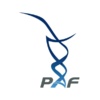Great News – The “Propionic Acidemia Nutrition Guidelines” Are Now Published!
The Nutrition Guideline Committee is happy to announce that the Organic Acidemia Workgroup has published the “Propionic Acidemia (PROP) Nutrition Guidelines” in the February, 2019 issue of Molecular Genetics and Metabolism. The article is available and can be downloaded at no cost at https://doi.org/10.1016/j.ymgme.2019.02.007.
Publication of the PROP/PA Nutrition Guidelines in Molecular Genetics and Metabolism brings the latest evidence- and consensus-based nutrition management recommendations to the attention of clinicians, researchers, policy makers, insurers, and patients.
The new Nutrition Management Guidelines for PROP/PA provide:
- New directions including:
-
- A greater emphasis on nutritional needs such as nutrient intake, nutritional interventions, supplementation, etc.
- Less emphasis on medical management which has been covered in previous publications;
- Additional topics such as monitoring to ensure nutritional adequacy, nutritional issues with pregnancy and lactation, nutritional management for secondary complications such as pancreatitis, and finally a section addressing liver transplantation and the nutritional management before, during, and after the procedure.
Two consumer-oriented pieces, Frequently Asked Questions and a Consumer Summary, provide patients and families with information to use when interacting with their providers. The summary highlights key recommendations and suggests questions that patients and families may want to discuss with the metabolic team.
- When patients and health care providers (HCPs) have the same information, they can work together as a team to identify the treatment that is best for the patient’s situation.
- You can access these pieces at the Genetic Metabolic Dietitians International (GMDI) or Southeast Genetics Network websites located at http://www.Southeastgeneticsnetwork.org/ngp and http://www.GMDI.org
- The new guidelines should lead to greater consistency of care across centers.
- There are several important resources included in the guidelines including recommended nutrient intakes, monitoring schedules, and nutritional interventions tables.
- A web site that provides all the resources and references used to develop the guidelines is available so that health care clinicians and others can readily obtain the background information related to the guidelines at the websites listed above.
- The guidelines development method utilized evidence from published research, practice-based medical literature and expert consensus processes.
